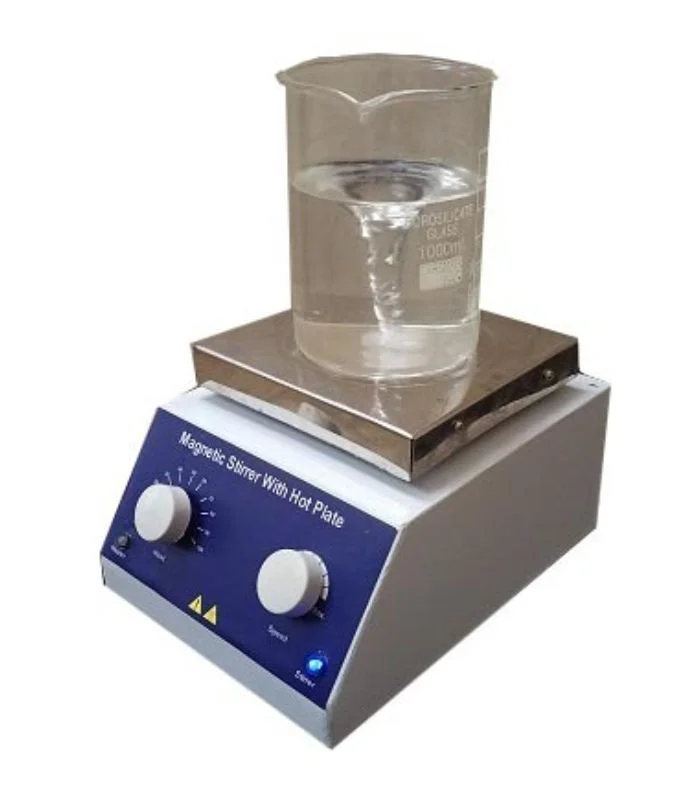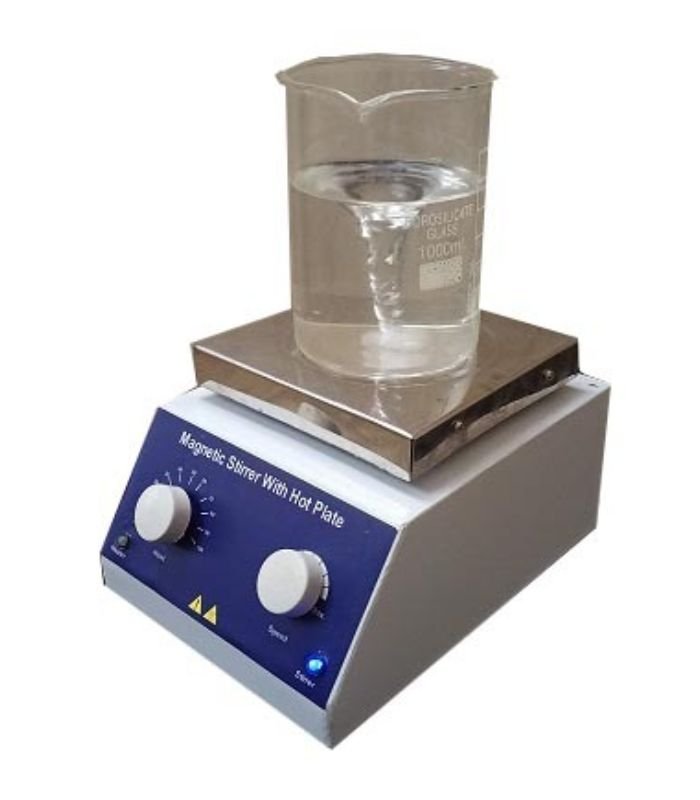
Stirrer: The Ultimate Mixing Tool
Stirrer: The Ultimate Mixing Tool
A stirrer is a fundamental tool used in laboratories, kitchens, and industrial settings to mix, blend, or agitate liquids and semi-liquids. Whether you're preparing a chemical solution, mixing ingredients in a kitchen, or developing a pharmaceutical product, the mixer plays a crucial role in achieving a consistent mixture. In this comprehensive guide, we’ll explore what a is, the types of available, their functions, and how they differ from similar mixing devices like mixers, agitators, and blenders.
Read Also:
Monoblock Pumps
Dosing Skids
What is a Stirrer?
A is a mixing device designed to homogenize, suspend, or dissolve substances by moving them using a tool, rod, or mechanism. Unlike high-powered machines, a usually operates at lower speeds and is built for precision and control, making it essential in lab environments and delicate mixing tasks.
Types of Rotating Stirrer
There are various types of available depending on the application. Let’s look at the most common ones.

1. Manual
The manual is the simplest type. It usually consists of a stirring rod—a long, thin rod made from glass, plastic, or stainless steel. These are ideal for small-scale mixing, especially in laboratories or when dealing with sensitive solutions that require gentle agitation.
2. Electric
An electric is a motor-driven device that automates the mixing process. These are useful in laboratories and industrial environments where consistent mixing is essential. The motor ensures a constant speed and efficient mixing with minimal manual effort.
3. Magnetic
A magnetic uses a rotating magnetic field to spin a small bar (called a stir bar) placed inside the container. This type of is perfect for sealed containers and is widely used in chemical laboratories. The magnetic offers a contactless way to mix substances without contamination.
4. Overhead
An overhead is ideal for high-viscosity liquids. It mounts over the mixing container and uses a shaft and impeller to stir the substance. These are commonly used in industrial and research applications where heavy-duty mixing is required.
5. Rotating
A rotating refers to any that uses a rotating mechanism, whether manual or powered. This type of mixing device is versatile and can be used in various environments including labs, kitchens, and production facilities.
Applications
Laboratory Use
In laboratories, especially magnetic and overhead are essential for preparing solutions, titrations, and suspensions. Their precision makes them ideal for sensitive chemical reactions.
Industrial Use
Industrial settings use electric and rotating to handle large volumes of viscous liquids. Whether it’s in pharmaceuticals, cosmetics, or food processing, ensure consistency and quality.
Home and Kitchen Use
In home settings, manual or hand-held mixers are common. Whether it’s stirring a pot of soup or mixing ingredients, the concept remains the same.
Choosing the Right Mixer
When selecting a consider the following:
-
Volume and viscosity of the material
-
Required speed and control
-
Nature of the container (open or closed)
-
Material compatibility (chemical resistance, food safety, etc.)
-
Power source (manual, electric, or magnetic)
Advantages of Using
-
Precision: Great for tasks requiring controlled mixing.
-
Versatility: Different types for different applications.
-
Safety: Especially magnetic that prevent contamination.
-
Energy efficiency: Consumes less power compared to blenders and mixers.
-
Space-saving: Compact designs available for small labs or kitchens.
Maintenance Tips for Devices
To ensure your Rotating lasts long and performs well:
-
Clean the stirring rod or attachment after each use.
-
Regularly check the motor and moving parts.
-
Avoid overloading the mixer beyond its capacity.
-
Use compatible containers to prevent spillage or damage.
-
Store in a dry place to avoid corrosion.
FAQs
1. What is the main difference between a agitator and a mixer?
A agitator is used for gentle, precise mixing often in labs, while a mixer is more powerful and used in kitchens or industrial settings for faster blending.
2. Can a magnetic be used for high-viscosity liquids?
No, magnetic mixer are best suited for low-viscosity fluids. For thick substances, an overhead mixer is more appropriate.
3. Is a manual mixer sufficient for chemical experiments?
For simple experiments, a manual mixer or stirring rod may suffice. However, for reactions requiring consistent mixing, an electric or magnetic mixer is better.
Need the Perfect Stirrer for Your Application?
Explore our range of manual, electric, and magnetic stirrers designed for labs, industries, and home use. Get expert guidance and quality assurance.
???? Contact Us for Expert AdviceOur Blogs
- IoT Based Industrial Automation for Pump & Other Applications
- Dosing Pump Spares
- Dosing Pump Repair Service
- Agitator for Water Treatment Plant
- Stirrer: The Ultimate Mixing Tool
- Industrial Agitator: Mixer, Design, Machine, Manufacturer
- Image: Dosing Done Right - Customized Dosing Solutions for Precision Control
- High-Performance Motor Driven Systems for Diverse Applications
- Unlocking the Power of Chemical Dosing in Composite Manufacturing
- High-Efficiency Hydraulic Dosing Pumps for Seamless Fluid Control
- Dosing Skids - Streamlining Chemical Dosing Operations
- Monoblock Pumps - Reliable and Efficient Fluid Handling Solutions
- Dosing Skids - Streamlining Chemical Dosing Operations
- IBC Stirrer - Efficient Mixing for Intermediate Bulk Containers
- IBC Agitator - Efficient Mixing for Intermediate Bulk Containers
- Chemical Dosing Skid - Streamlining Your Chemical Dosing Operations
- Actuated Dosing Pumps - Precision and Reliability
- Mechanical Dosing Pump - Precision and Reliability
- Automating Precision: Exploring Automatic Chemical Dosing Systems
- Precision Dosing with Our Mechanical Actuated Dosing Pumps
- Mastering Mixing: Introducing Our Powerful Disperser Agitator
- Customized Dosing Solutions: Tailored Precision for Your Needs
- Electric Dosing Pump
- Customized Dosing Manufacturer: Tailored Solutions for Precision Dosing
- Flash Mixer: The Versatile Solution for Rapid Mixing
- Precision Pumping with Sarayu Engineering's Motor Driven Diaphragm Pumps
- Precision Dosing, Simplified: The Benefits of Chemical Dosing Skids
- Keeping it Moving: Unveiling the Power of IBC Agitators for Efficient Mixing
- Guardians Against Flames: A Comprehensive Guide to Fire Fighting Pumps
- Powering Up with Air: Exploring the Advantages of Pneumatic Agitators
- Keeping it Stirred: Unveiling the Power of Industrial Agitators in Mixing Applications
- The Heart of Reliable Dosing: Exploring the Advantages of Diaphragm Pumps
- Mastering Metering: Unveiling the Advantages of Dosing Skids for Precise Chemical Injection
- 2024 Guide to Dosing Pumps: Precision in Fluid Management
- The Versatility of Monoblock Pumps
- The Advantages of Automatic Water Dosing Systems
- The Importance of Flocculators in Water Treatment
- The Role of Industrial Agitators in Mixing Applications
- Demystifying Hydraulic Dosing Pumps: A Comprehensive Guide
- Unlocking Efficiency: The Role of Industrial Pumps in Streamlining Operations
- Chemical Pumps manufacturer in Gujarat
- Stirrer manufacturer in Gujarat
- Industrial Agitator manufacturer in Gujarat
- Industrial Centrifugal Pumps manufacturer in Gujarat
- Industrial Centrifugal Pumps supplier in Gujarat
- AODD Pumps manufacturer in Gujarat
- AODD Pumps supplier in Gujarat
- RO Skid manufacturer in Gujarat
- RO Skid supplier in Gujarat
- Dosing Systems manufacturer in Gujarat
- Dosing Systems supplier in Gujarat
- Chemical Dosing Pumps manufacturer in Gujarat
- Chemical Dosing Pumps supplier in Gujarat
- Mechanical Dosing Pumps manufacturer in Gujarat
- Mechanical Dosing Pumps supplier in Gujarat
- Hydraulic Dosing Pumps manufacturer in Gujarat
- Hydraulic Dosing Pumps supplier in Gujarat
- Electronic Dosing Pumps manufacturer in Gujarat
- Chemical Pumps manufacturer in india
- Stirrer manufacturer in india
- Electronic Dosing Pumps supplier in Gujarat
- Industrial Agitator manufacturer in india
- Mechanical Dosing Pumps manufacturer in India
- Industrial Centrifugal Pumps manufacturer in India
- Industrial Centrifugal Pumps supplier in India
- AODD Pumps manufacturer in India
- AODD Pumps supplier in India
- RO Skid manufacturer
- RO Skid supplier
- Dosing Systems manufacturer in India
- Dosing Systems supplier in India
- Chemical Dosing Pumps manufacturer in India
- Chemical Dosing Pumps supplier in India
- Mechanical Dosing Pumps supplier in India
- Hydraulic Dosing Pumps manufacturer in India
- Hydraulic Dosing Pumps supplier in India
- Electronic Dosing Pumps manufacturer in India
- Electronic Dosing Pumps supplier in India
